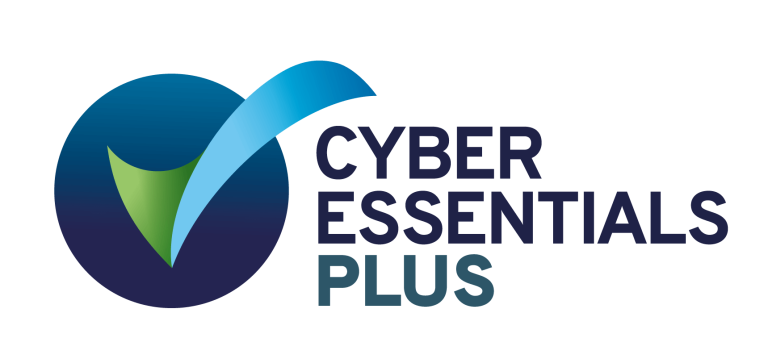As a manager, navigating the complexities of employee performance can be challenging. Whether you’re dealing with an underperforming team member or someone who needs a little extra guidance to meet their goals, a Performance Improvement Plan (PIP) can be an invaluable tool. This guide will walk you through what a PIP is, how to use one effectively, and how to create a PIP template that works for your organisation.
What Is a Performance Improvement Plan (PIP)?
Defining a Performance Improvement Plan
A Performance Improvement Plan (PIP) is a structured document that outlines specific areas where an employee’s performance needs to improve. It serves as a formal agreement between the employee and the employer, detailing the expectations for improvement, the timeframe in which these improvements should occur, and the support that will be provided to help the employee succeed.
The Purpose of a PIP
The primary goal of a PIP is not to punish the employee but to give them a clear path to improve their performance. It’s a tool for constructive feedback and development, offering the employee an opportunity to address performance issues with the guidance and support of their manager.
When to Use a PIP
Not every performance issue requires a PIP. Before implementing one, it’s important to assess whether other forms of feedback or coaching have been exhausted. A PIP is most appropriate in situations where:
- The employee has consistently failed to meet performance expectations.
- Previous informal feedback or coaching has not led to improvement.
- There is a specific, measurable gap in the employee’s performance that needs to be addressed.
Identifying the Right Time
Timing is crucial when introducing a PIP. It should be implemented when there is a genuine concern about the employee’s performance, but also when there is a reasonable belief that the employee can improve with the right support. Avoid using a PIP as a last-minute step before termination; it should be a proactive measure to help the employee get back on track.
How to Create an Effective PIP
Setting Clear and Achievable Goals
The success of a PIP hinges on setting clear, specific, and achievable goals. These goals should be directly related to the areas where the employee’s performance is lacking and should be measurable so that both the employee and manager can track progress.
SMART Goals
A useful framework for setting goals within a PIP is the SMART criteria:
- Specific: Clearly define what needs to be achieved.
- Measurable: Ensure that the goals can be quantified or measured.
- Achievable: Set goals that are realistic and attainable within the given timeframe.
- Relevant: The goals should be directly related to the employee’s role and responsibilities.
- Time-bound: Specify the deadline by which the goals should be met.
Providing Support and Resources
A PIP is not just about setting goals—it’s also about providing the support and resources the employee needs to achieve those goals. This could include additional training, mentoring, or regular check-ins with their manager.
Tailoring Support
Each employee is different, so the support provided should be tailored to their specific needs. For example, if an employee is struggling with a particular software tool, offering additional training sessions or pairing them with a more experienced colleague could be beneficial.
Monitoring Progress and Providing Feedback
Regular monitoring and feedback are critical components of a successful PIP. The employee should know how they are progressing towards their goals and where they may need to make further improvements.
Scheduled Check-Ins
Plan regular check-in meetings throughout the duration of the PIP. These meetings should focus on reviewing the employee’s progress, discussing any challenges they are facing, and adjusting the PIP if necessary. This ongoing dialogue ensures that the employee remains engaged and motivated to improve.
Documenting the Process
Documentation is key to ensuring transparency and fairness throughout the PIP process. All aspects of the PIP, from the initial discussion to the final review, should be thoroughly documented.
Keeping Records
Maintain detailed records of all meetings, feedback provided, and any adjustments made to the PIP. This documentation can be crucial if further action, such as extending the PIP or moving towards termination, becomes necessary.
The PIP Template: What Should It Include?
Essential Components of a PIP Template
Creating a comprehensive PIP template can streamline the process and ensure that all necessary elements are covered. A well-structured PIP template should include the following sections:
1. Employee Information
- Name, job title, and department.
- Manager’s name and contact information.
2. Performance Issues
- A clear and concise description of the performance issues that have been identified.
- Specific examples that illustrate these issues.
3. Performance Goals
- The goals the employee needs to achieve to improve their performance.
- These should be SMART goals, as discussed earlier.
4. Support and Resources
- The support and resources that will be provided to help the employee meet their goals.
- This could include training, mentoring, or additional tools.
5. Timeframe
- The duration of the PIP and the deadline by which the goals should be met.
- Include any scheduled check-in dates for reviewing progress.
6. Consequences of Not Meeting Goals
- A clear statement outlining what will happen if the employee fails to meet the goals within the specified timeframe.
- This could include further disciplinary action, up to and including termination.
7. Signatures
- Space for both the employee and manager to sign and date the PIP, acknowledging their understanding and agreement with the plan.
Customising the Template for Your Organisation
While the basic components of a PIP are generally consistent, it’s important to customise the template to fit your organisation’s specific needs. This might involve adjusting the language used, incorporating company-specific policies, or adding additional sections that are relevant to your industry.
Tailoring to Your Culture
Consider your company’s culture when customising the PIP template. The tone and approach of the PIP should align with how your organisation typically handles performance issues, whether that’s a more formal, structured process or a more supportive, coaching-oriented approach.
Final Thoughts on Performance Improvement Plans
A Performance Improvement Plan (PIP) is a powerful tool when used correctly. It’s not just about addressing poor performance, but about giving employees the opportunity to improve, grow, and ultimately succeed in their roles. By setting clear goals, providing the necessary support, and maintaining open communication, you can help your employees get back on track and contribute positively to your organisation.
Remember, the goal of a PIP is not to set employees up for failure, but to provide them with the guidance and resources they need to meet expectations. With the right approach, a PIP can be a constructive process that benefits both the employee and the company.
FAQs around PIP
When should I consider using a Performance Improvement Plan (PIP) for an employee?
You should consider using a PIP when an employee has consistently failed to meet performance expectations, and previous informal feedback or coaching has not led to improvement. A PIP is appropriate when there is a specific, measurable gap in performance that needs to be addressed, and when you believe the employee can improve with the right support.
What are the key components of a Performance Improvement Plan (PIP) template?
A PIP template should include the following key components: employee information, a description of performance issues, specific performance goals (SMART goals), the support and resources that will be provided, a timeframe for improvement, the consequences of not meeting the goals, and signatures from both the employee and manager.
How do I set effective goals within a PIP?
To set effective goals within a PIP, use the SMART criteria: Specific, Measurable, Achievable, Relevant, and Time-bound. These goals should be directly related to the areas where the employee’s performance is lacking, and they should be realistic enough for the employee to achieve within the given timeframe.
How should I monitor an employee’s progress during a PIP?
Monitoring progress during a PIP involves scheduling regular check-in meetings with the employee to review their progress, discuss any challenges they are facing, and provide ongoing feedback. Documentation of these meetings and any adjustments to the PIP is essential to ensure transparency and fairness.
What happens if an employee does not meet the goals set out in the PIP?
If an employee does not meet the goals set out in the PIP, the next steps could involve extending the PIP, implementing further disciplinary action, or, in some cases, termination of employment. It’s important to clearly outline these consequences in the PIP so that the employee understands the potential outcomes of not improving their performance.


